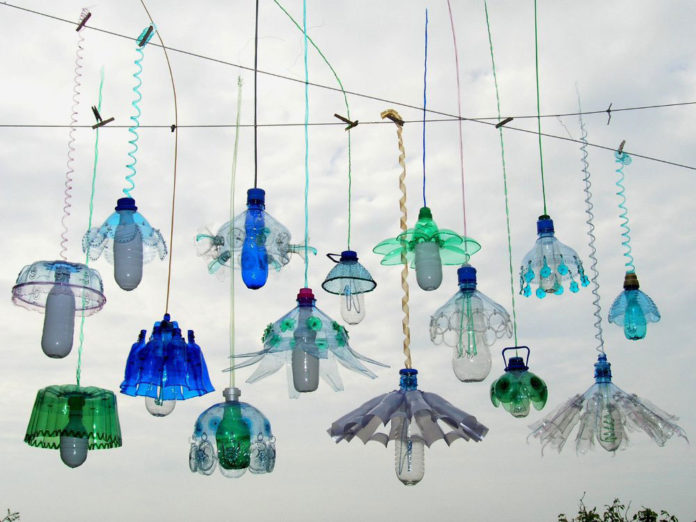Czech artist Veronika Richterová uses the near-indestructible nature of plastic PET bottles to her advantage. By snipping, twisting, and heating the drinking vessels, she forms long-lasting sculptures that visually mirror the qualities of glass. This similarity inspired her series of PET luminaries, a project composed of fully functioning light systems in the form of chandeliers and lamps.
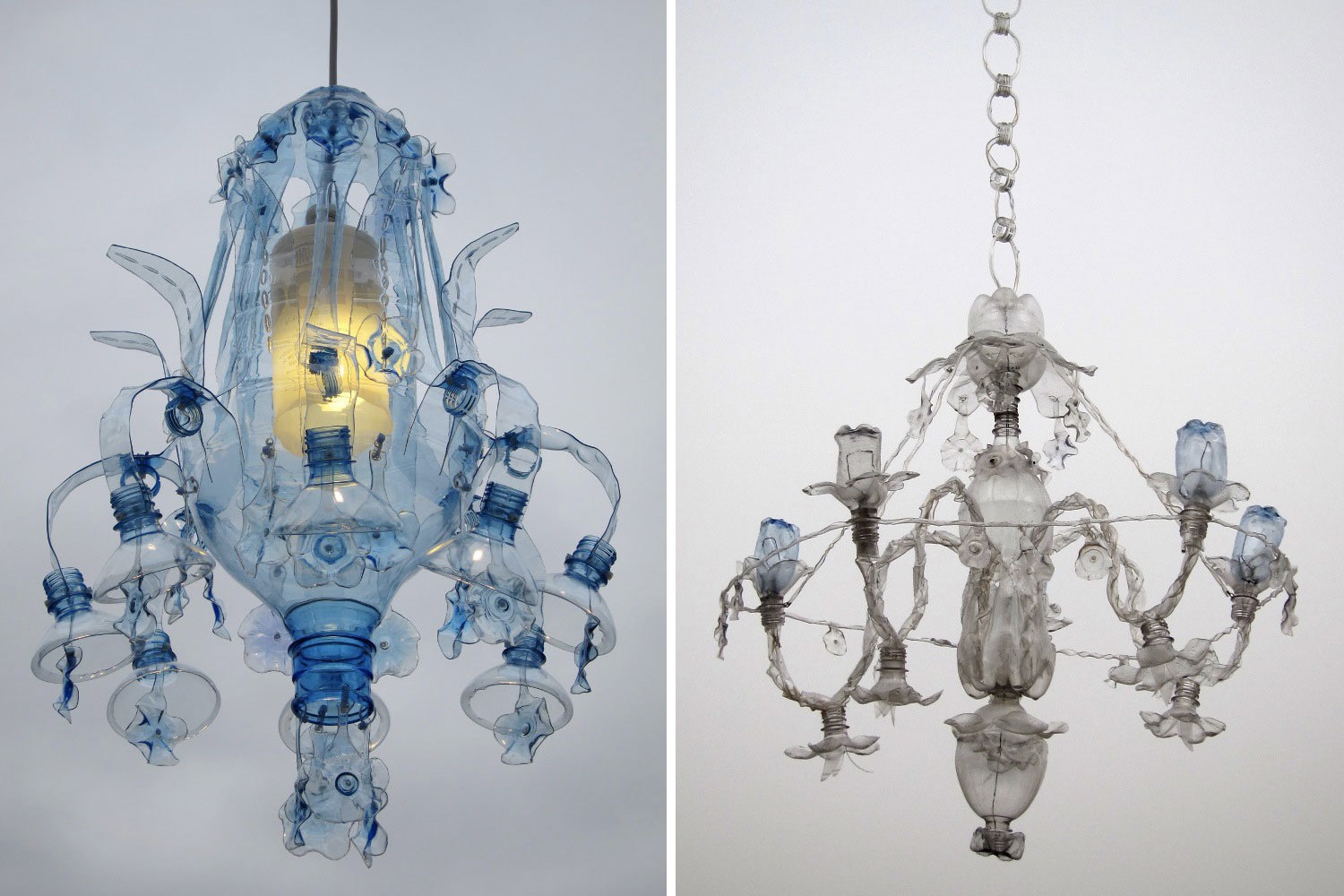
The included works are decorated with tulip-shaped light bulb covers, scalloped edges, and long, twisted segments of recycled bottles that imitate electrical cords. In order to protect these heat-sensitive sculptures, Richterová installs her works with bulbs and cables that produce minimal heat.
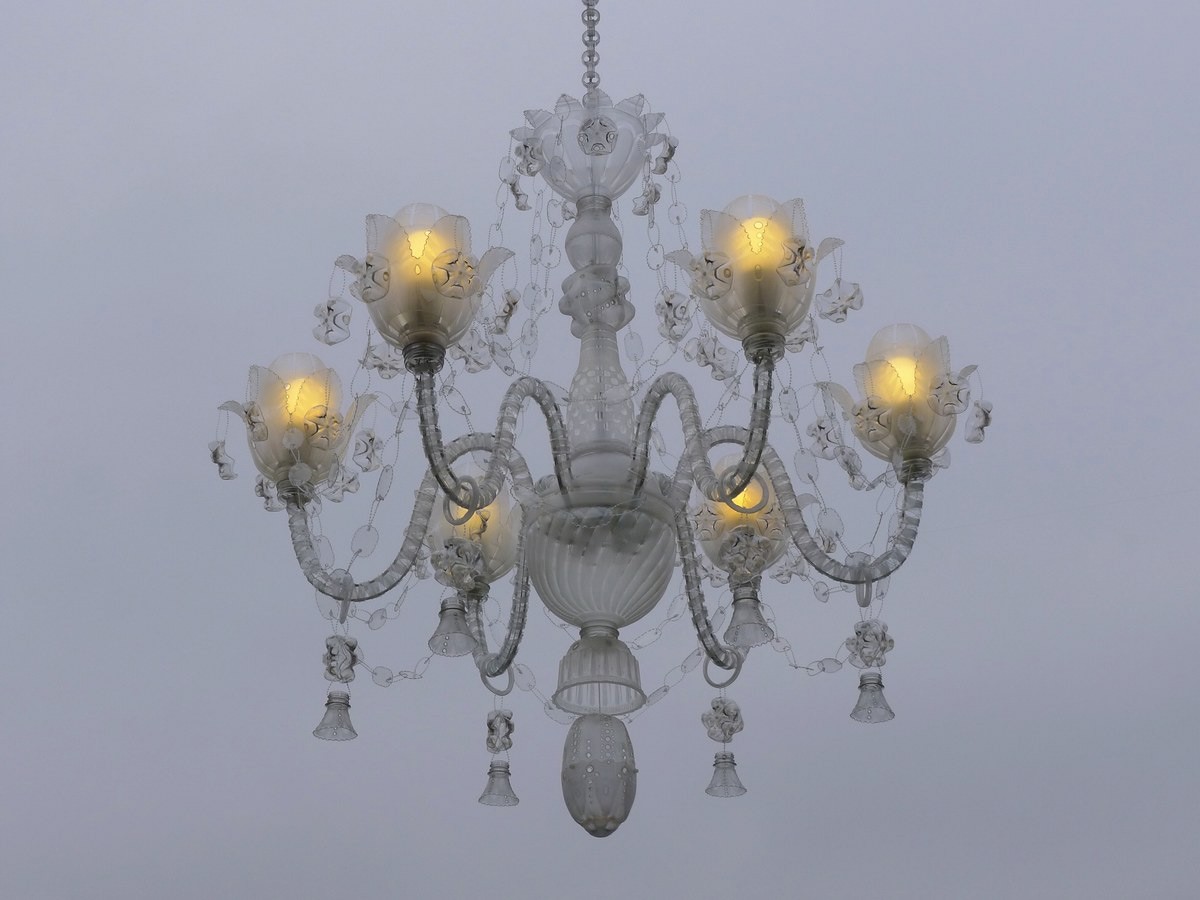
In 2007, Richterová enlisted help from her graphic designer husband, Michal Cihlár, and together they opened the PET-ART Museum. It is a kind of academic hub regarding anything and everything plastic bottle – from detailed accounts on how the design of PET bottles has evolved to the differences in composition between individual kinds of bottles as well as their shared traits. The PET-ART Museum is also home to an assemblage of over 3 000 plastic bottles that Richterová has collected from 76 countries around the world.
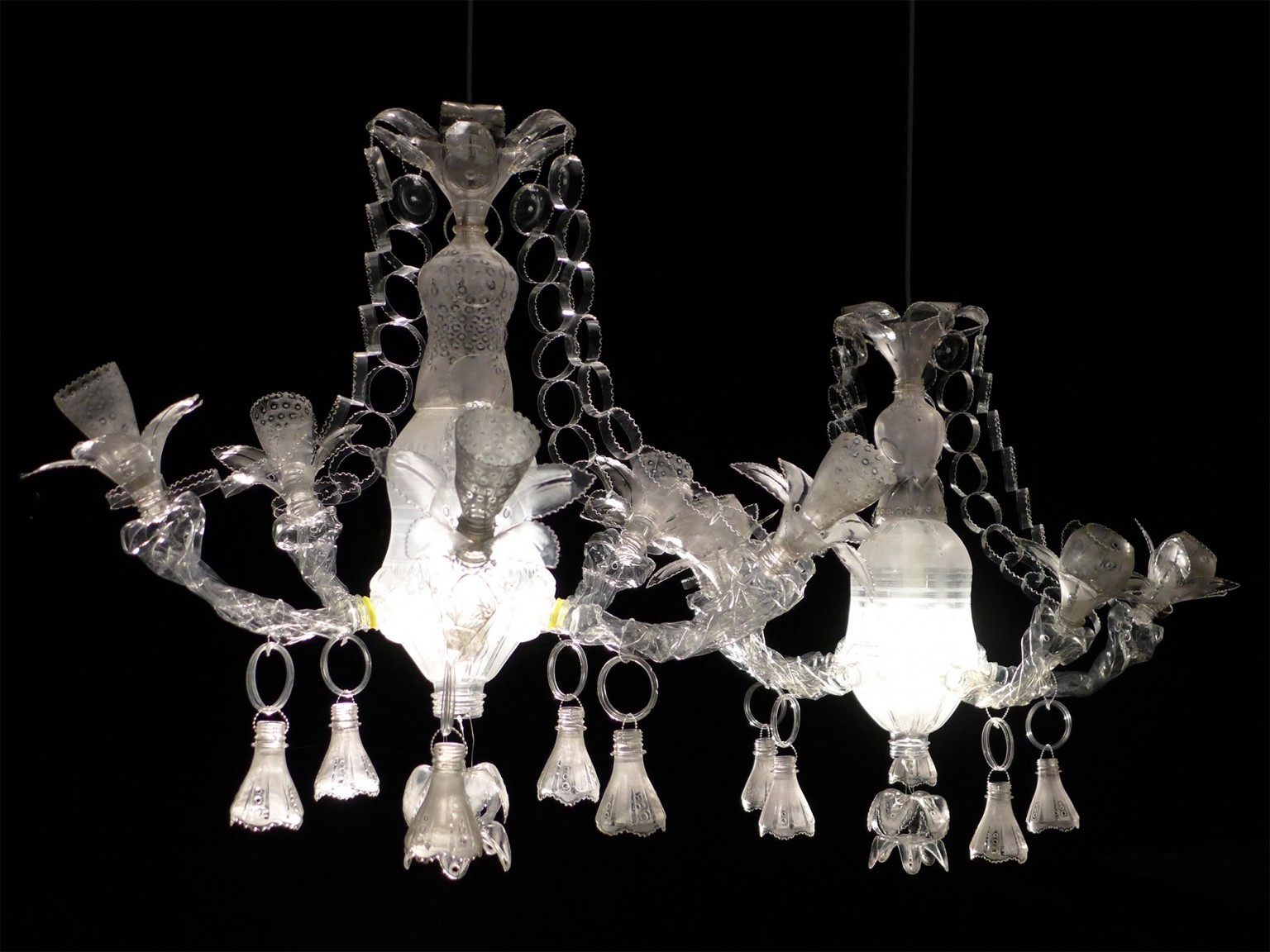
Richterová’s fascination with the plastic bottle extends further than her colorful sculpture-making. She also writes extensively about the usage of plastic bottles in different countries and the history of its mass-scale production.
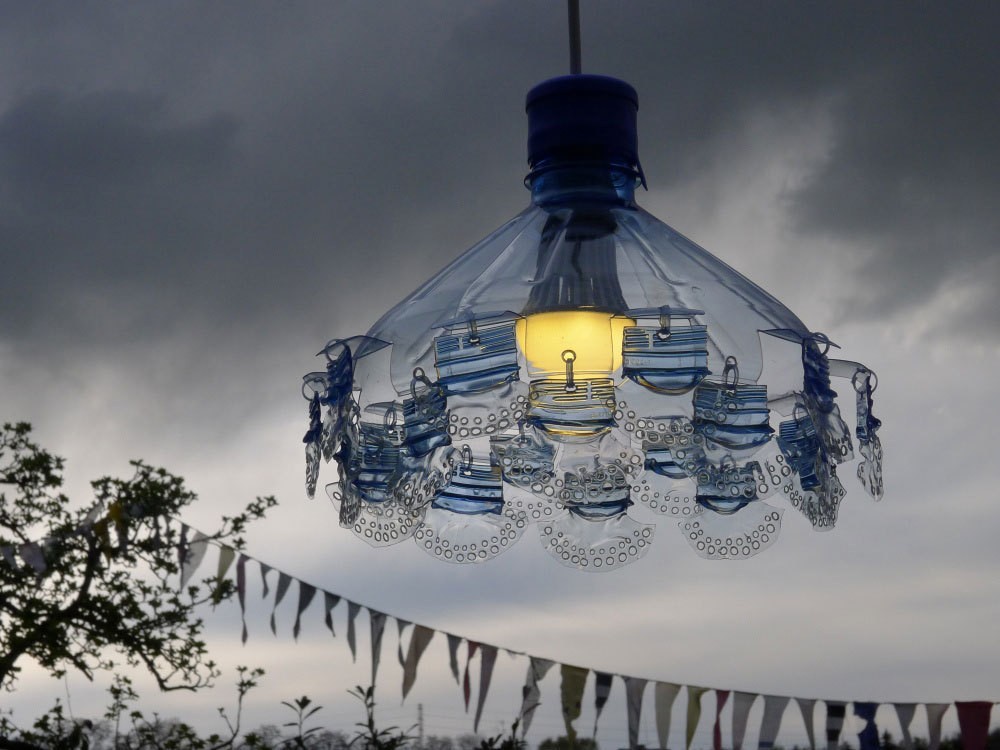
Speaking to Huffington Post, Richterová describes the experimental process of creating her plastic sculptures.

“The principle is very simple; each PET bottle has the tendency to get smaller when heated. However, in my experience, it is hard to regulate the process as different kinds of bottles are of different quality and their behavior is often unpredictable. So my work has always been full of adventure. The final sculpture is usually the result of many experiments. The biggest advantage is that there is a lot of material for free everywhere. I have a special house full of bottles that I have found, which is my ‘treasury’ where I can go to choose what I want to work with,” – she says.
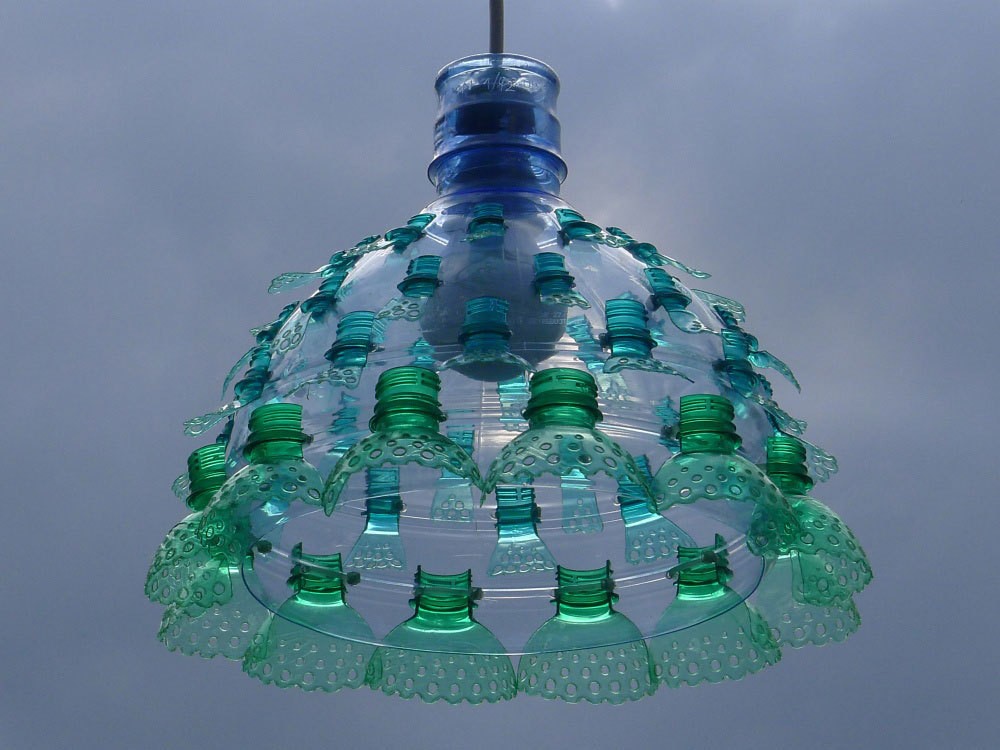
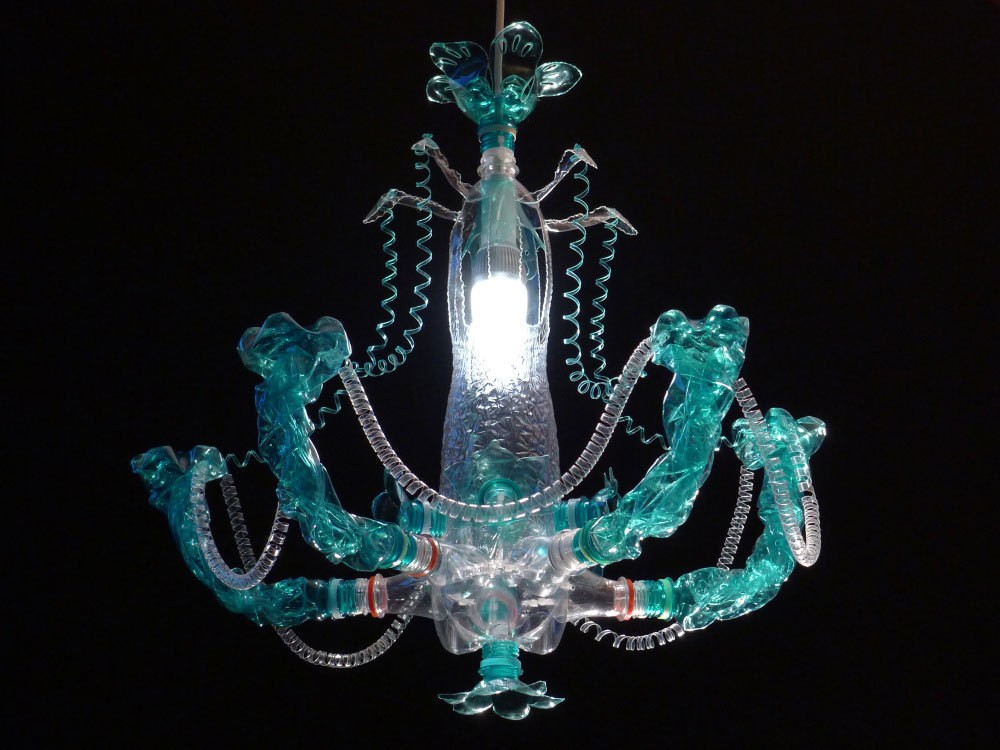
Richterová’s work proves the adage that (with some handiwork and a keen imagination) one man’s trash is another man’s treasure.






